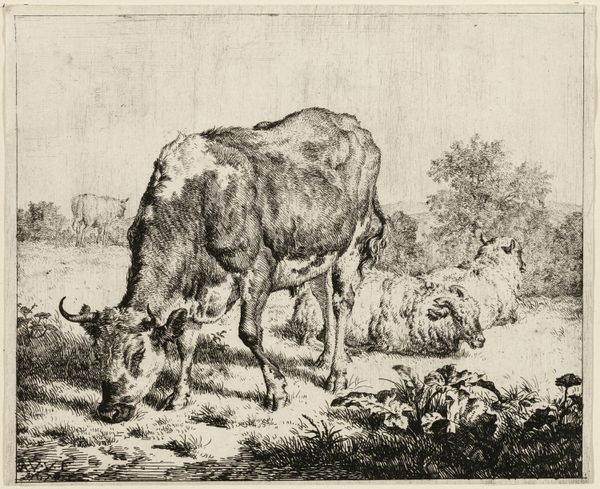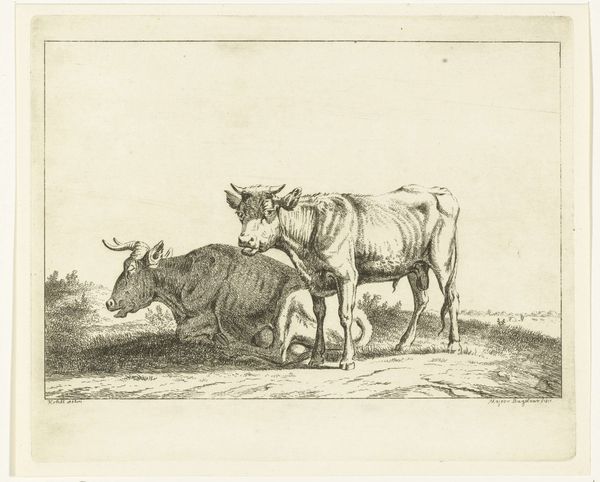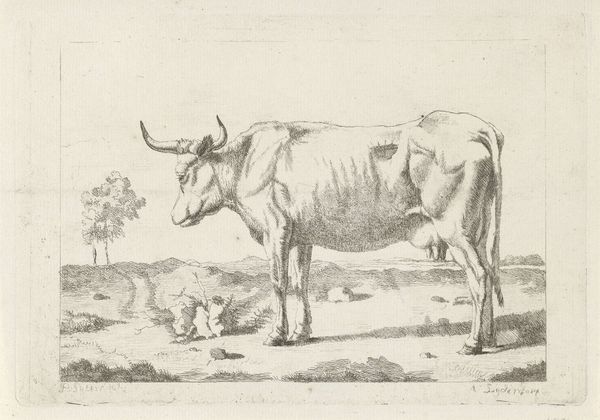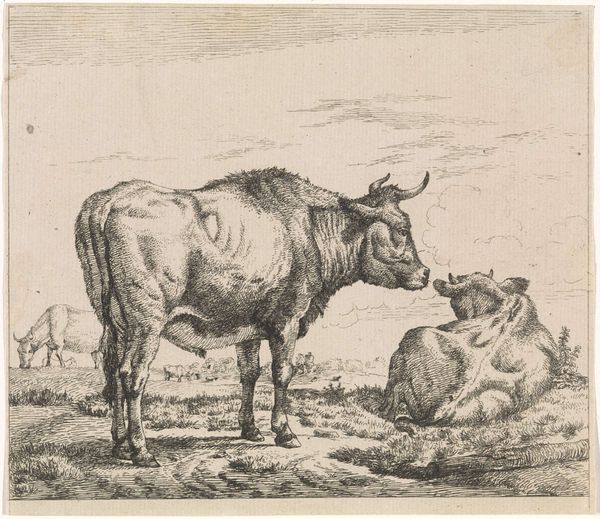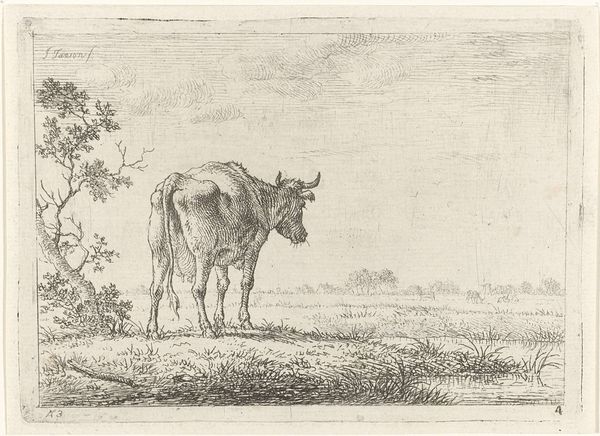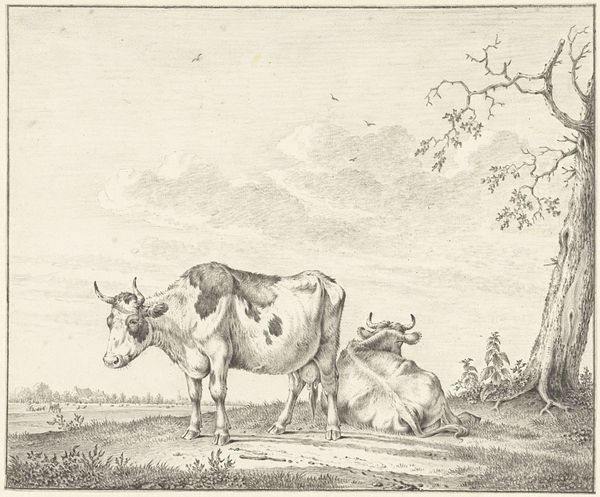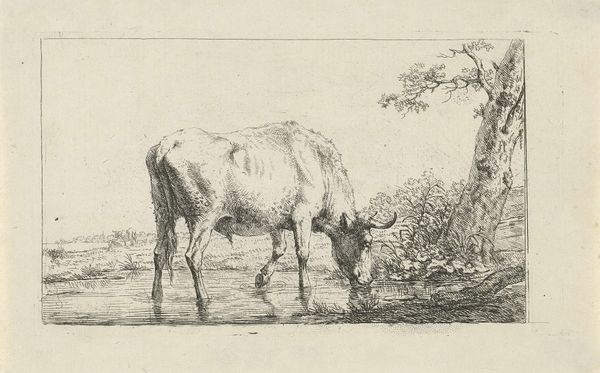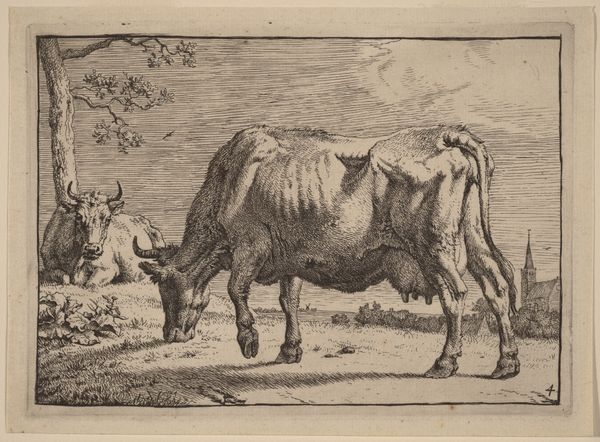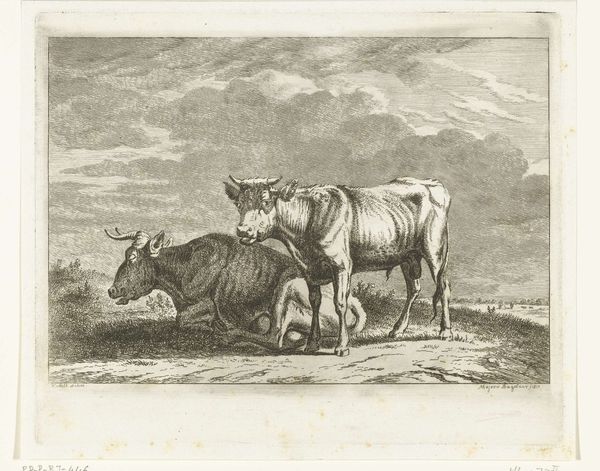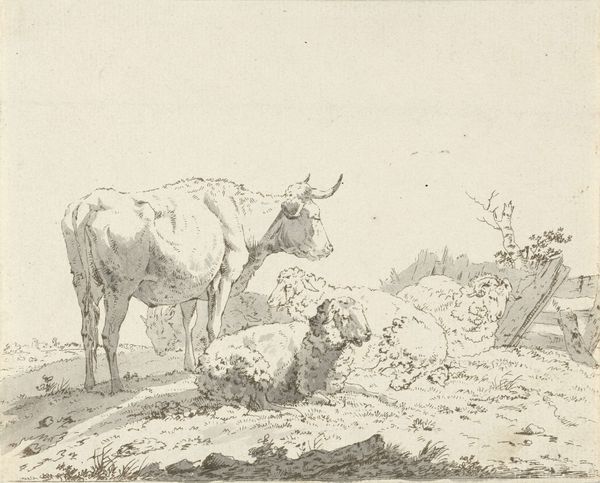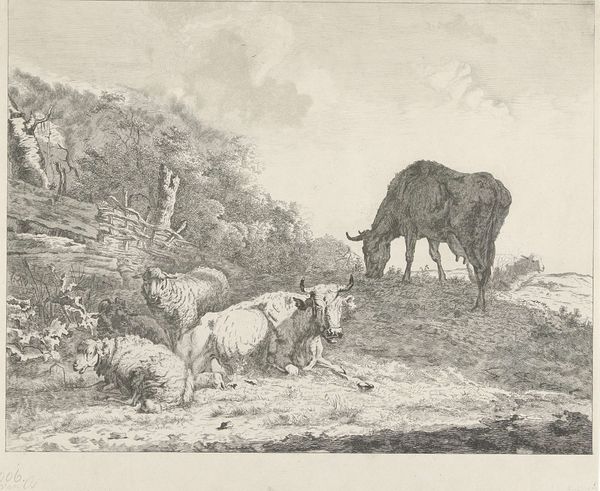
drawing, print, etching
#
drawing
#
animal
# print
#
pen sketch
#
etching
#
pencil sketch
#
old engraving style
#
landscape
#
realism
Dimensions: height 168 mm, width 215 mm
Copyright: Rijks Museum: Open Domain
Curator: This is Pieter Gerardus van Os's etching titled "Koe met twee schapen," created sometime between 1791 and 1839. You can currently find it here in the Rijksmuseum's collection. Editor: It's a rather unassuming composition at first glance—a grazing cow looms, its backside towards us, while two sheep rest in the lower left. There’s something very grounding and stilling in the scene’s gentle tonality and straightforward presentation. Curator: I think you've hit upon the central theme. Van Os here references the bucolic tradition and arcadian fantasies but subverts the human-centric approach by depicting animals. In that era, they represented national prosperity and stability. These are symbols of wealth and pastoral virtue. Editor: I agree about subversion, though my analysis differs. The perspective is unusual. Placing the cow’s rear so prominently, nearly center, isn’t exactly classically appealing, is it? However, this disruptive choice is technically compelling. It forces our eye to move, seeking the forms within and around it. It highlights a tension between a realistic rendering and a consciously artistic arrangement. Curator: Interesting point. The almost nonchalant placement of the animals evokes, perhaps unintentionally, the cycle of life and the presence of animals which remain relatively unchanged in a modernising world. The scale of the cow, though imposing formally, is also reassuring. The eternal cycle of sustenance, a comfort in tumultuous times, do you agree? Editor: To some extent, yes. Van Os’ etching possesses a textural richness; notice how the lines suggesting shadow create an impression of solidity in the cow’s form versus the softer treatment of the sheep. It is an early Realist depiction of the animal which makes this piece very enduring. Curator: I find this exploration shows how art gives form to the shared symbolic world that we draw from and contribute to through generations. Editor: Yes, I see what you mean and in the same way it challenges the very premises by which we discern art itself through the masterful handling of line, shade, and subject.
Comments
No comments
Be the first to comment and join the conversation on the ultimate creative platform.

